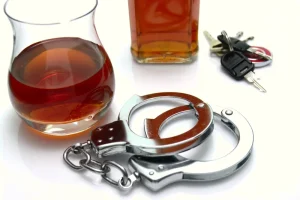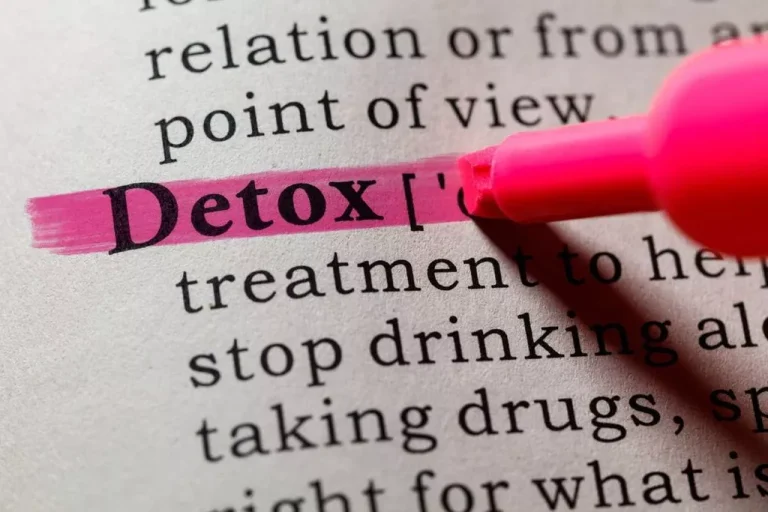
Opioids are drugs such as heroin, opium, morphine, codeine and methadone. Opioid withdrawal can be very uncomfortable and difficult for the patient. Long-term treatment after benzodiazepine withdrawal will depend on your reasons for taking them in the first place and your reasons for quitting. If you have a psychiatric condition that was managed by the benzodiazepines, you will need an alternative plan to manage your condition. Typically, this is a combination of therapy and pharmacologic support. However, that doesn’t necessarily mean you will require inpatient care.

6. WITHDRAWAL MANAGEMENT FOR ALCOHOL DEPENDENCE

It was approved by the Vanderbilt University Institutional Review Board (IRB) #20052, and did not require written informed consent because it was conducted as an anonymous survey that began with a question which recorded each respondent’s consent for participation. There is some evidence that lithium carbonate may be an effective medication for cannabis withdrawal management. However, until further research has established the efficacy of the medication for this purpose, it is not recommended for use in closed settings. Cannabis withdrawal is managed by providing supportive care in a calm environment, and symptomatic medication as required (Table 3). Withdrawal management rarely leads to sustained abstinence from alcohol. After withdrawal is completed, the patient should be engaged in psychosocial interventions such as described in Section 5.
How Long Does Withdrawal From Benzodiazepines Last?
Alcohol withdrawal symptoms appear within 6-24 hours after stopping alcohol, are most severe after 36 – 72 hours and last for 2 – 10 days. Offer accurate, realistic information about drugs and withdrawal symptoms to help alleviate anxiety and fears. It is very common for people who complete withdrawal management to relapse to drug use. It is unrealistic to think that withdrawal management will lead to sustained abstinence.

3. WITHDRAWAL MANAGEMENT FOR OPIOID DEPENDENCE

Benzodiazepines are a powerful class of medication used to treat anxiety, insomnia, and panic disorder. Examples of benzodiazepines include alprazolam (Xanax) and diazepam (Valium). According to the British National Formulary, it is better to withdraw too slowly rather than too quickly from benzodiazepines.[67] The rate of dosage reduction is best carried out so as to minimize the symptoms’ intensity and severity. Anecdotally, a slow rate of reduction may reduce the risk of developing a severe protracted syndrome. Other therapies, including counseling and cognitive behavioral therapy (CBT), may be helpful for people looking to manage symptoms without relying on other drugs. More severe reactions or withdrawals may also be more likely when taking strong drugs either for long periods or alongside other types of medications.
Long-term consequences of benzodiazepine-induced neurological dysfunction: A survey
The authors extend heartfelt thanks to all of the respondents who shared their experiences in the survey. All analyses were delivered via a structured reporting process and validated against the original SAS reports. The survey was made available online through websites and internet benzodiazepine support groups and general health and wellness groups. The term ‘withdrawal management’ (WM) has been used rather than ‘detoxification’.
Dopamine is a type of messenger that is partly responsible for how humans feel pleasure. Supportive counseling and other targeted therapies or medications may help a person manage the symptoms and improve their quality of life. Any information given on this site should not be substituted for the advice of a healthcare provider who is well-informed about benzodiazepine dependency and withdrawal. The authors gratefully acknowledge the work of Dr. Jane Macoubrie who was instrumental in creating the original survey, envisioning this publication, and supporting efforts at all levels to better explore the nature of these symptoms.
- A multimodal approach to symptom control was attempted involving olanzapine 10mg, gabapentin 300mg, phenobarbital 260mg, and ondansetron 4mg.
- Research in the British Journal of Clinical Pharmacology notes that an estimated 10–25% of people who use benzos for extended periods experience withdrawal symptoms that last for 12 months or longer.
- Withdrawal symptoms from short-acting drugs, such as Xanax, may come on faster than withdrawal symptoms from long-acting drugs, such as Valium.
- Ketamine demonstrates antagonism of the NMDA receptor as well as agonism of the GABA-A and GABA-B receptors making it an intuitive potential adjunctive medication for BZD withdrawal.
- Although I refer to protracted withdrawal as drug neurotoxicity[emphasis added], it is still a bad idea to give the doctor a diagnosis rather than to present symptoms.
- Practical, evidence-based, safe and effective approaches are urgently needed for benzodiazepine deprescribing and managing the enduring neurological sequelae of benzodiazepine use.
Slowly reducing the dose, less than 5 to 10% of the current dose monthly, can minimize the severity of the withdrawal symptoms and is the recommended way to discontinue benzodiazepines safely. Presentation may vary based on the frequency, duration, and quantity that was typically used. The body aims to maintain homeostasis, and when a chemical that was once overused is removed, counter-regulatory mechanisms may produce unopposed effects, and withdrawal symptoms may ensue.
What is benzodiazepine protracted withdrawal?
There is some research that indicates that some people who took benzodiazepines long-term prior to discontinuation may have persistent or permanent problems with concentration, learning, memory, and/or a reduced tolerance to stress. As BZD prescriptions increase, there is a concern for patients presenting to the emergency department for symptoms related to BZD withdrawal. Current standard treatment of BZD withdrawal includes long-acting BZDs while adjunctive medications can be administered for additional support of withdrawal symptom management. Ketamine demonstrates antagonism of the NMDA receptor as well as agonism of the GABA-A and GABA-B receptors making it an intuitive potential adjunctive medication for BZD withdrawal. In this case study, the patient presented with combined BZD and opioid withdrawal requiring increasing amounts of BZDs for symptomatic control. Given the concern of respiratory depression with coadministration of BZDs and buprenorphine, a subanesthetic dose of ketamine was administered as an adjunctive medication resulting in significant improvement of the patient’s withdrawal symptoms.
PROTRACTED WITHDRAWAL SYNDROME (PWS)
In addition to the immediate health risk, benzodiazepine withdrawal can seriously affect your quality of life. Experiencing rebound symptoms means the symptoms you had before taking benzodiazepines come back even stronger than before. Benzodiazepines represented in the survey included clonazepam (taken by 52.9 percent), alprazolam (41.7 percent), lorazepam (36.1 percent), and diazepam (32.1 percent). Of those surveyed, 43.7 percent said “situational anxiety” severe benzodiazepine withdrawal syndrome was the leading reason for their prescription, with insomnia or sleep disturbances second at 40.3 percent, and panic attacks third at 39.3 percent. In addition, 76.2 percent of respondents had not been informed that benzodiazepines are approved for short-term use only and that discontinuation might be difficult. Benzo withdrawal can be a stressful process, but it is often necessary for people trying to get themselves off benzodiazepine drugs.
If consent was waived for your study, please include this information in your statement as well. We note that you have stated that you will provide repository information for your data at acceptance. Should your manuscript be accepted for publication, we will hold it until you provide the relevant accession numbers or DOIs necessary to access your data. If you wish to make changes to your Data Availability statement, please describe these changes in your cover letter and we will update your Data Availability statement to reflect the information you provide.